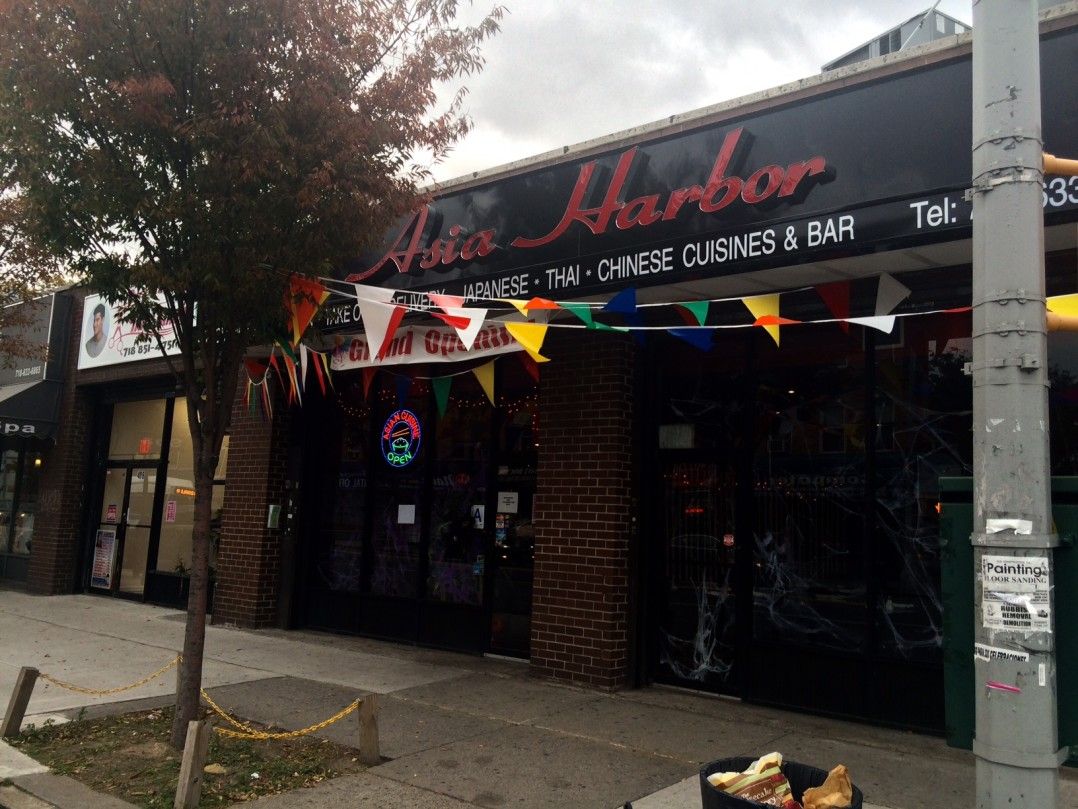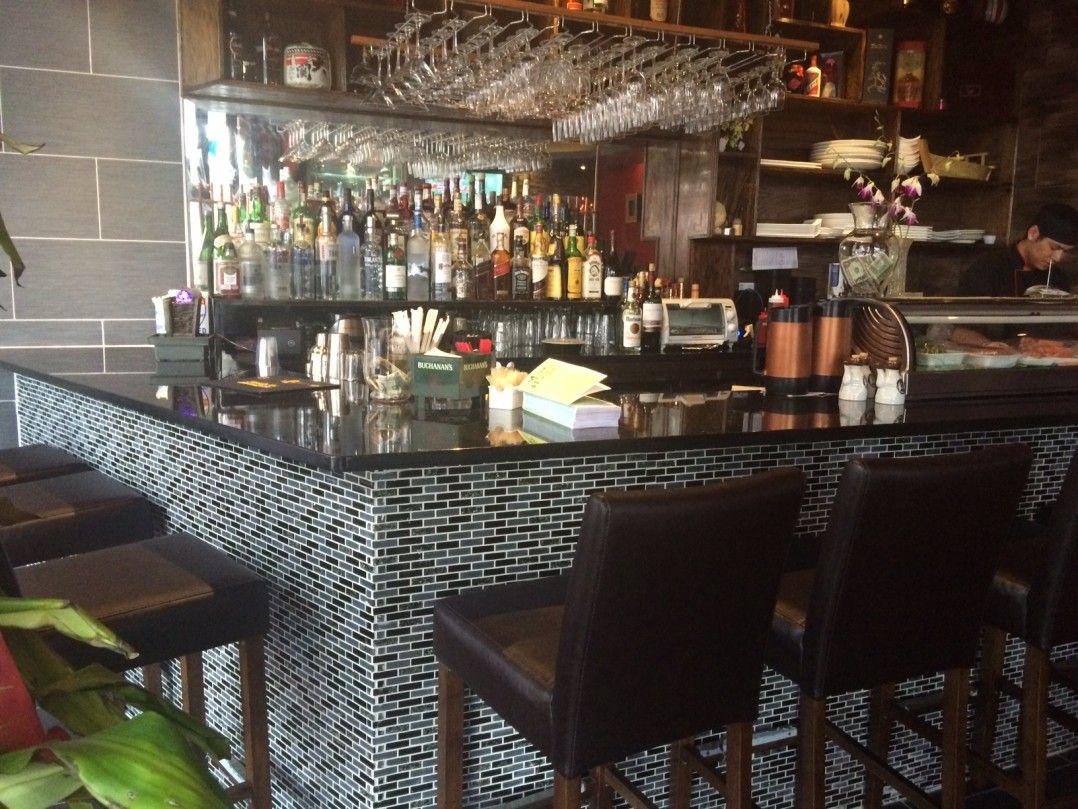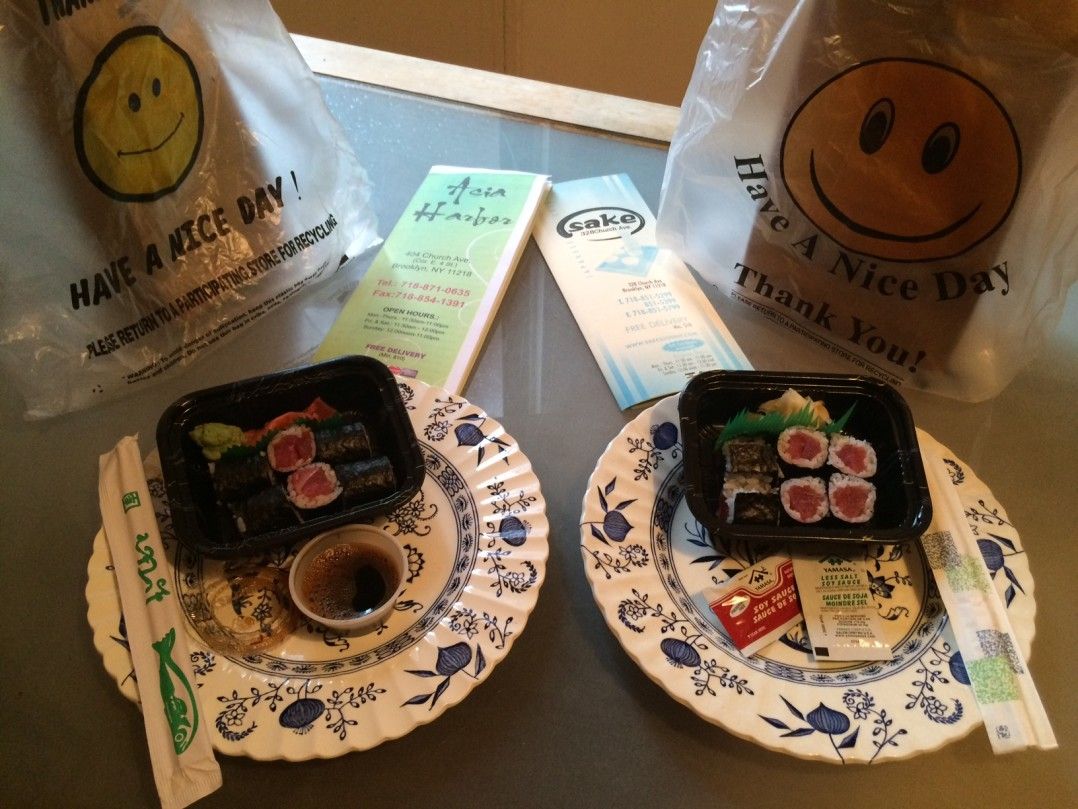Asia Harbor Replaces Yen Yen as More Restaurants Come to Church Avenue


Farewell to Yen Yen and its tiny Tiki bar. There’s a new kid in town. Asia Harbor, a fusion restaurant at 404 Church Avenue, has replaced the old-school Chinese eatery at that address as dining options along the avenue keep popping up.
Beginning on October 8 when the new restaurant opened, Japanese and Thai now add to a mix of Asian cuisines that includes some Chinese items, according to Irene Zhu, Asia Harbor’s 24-year-old manager. Zhu is the niece of Yen Yen’s original owners, Bill and Amanda Rong, who are now semi-retired and currently traveling back home in Hong Kong.
“They got tired of running a Chinese restaurant for 27 years,” said Zhu. “A lot of people have come here to ask, ‘Where did Yen Yen go?’ We are young and taking over with new food and customers.”

By “we,” Zhu is referring to her husband, Edward He. Together, they’ve renovated the entire space with a new dining area and a swanky new bar that seats a few more people than the funky old one did. While Yen Yen’s head chef and some wait staff remain, Asian Harbor is seeking a new bartender and has installed a new sushi chef.
“When you come in, we’ll still make Tiki drinks for you. If I don’t know, I’ll Google it,” Zhu said, noting that Yen Yen’s classic Tiki cocktail glasses for Zombies and Scorpions remain at the ready behind the bar.

So what’s gone? Most of the items on the old Yen Yen menu, including Hunan and Szechuan items such as won ton soup, baby clams with black bean sauce, and beef with scented ginger (not to mention a few singular Yen Yen specialties: “Vegetarian Monk,” an “ancient vegetarian delight” made with bean curd sheets and “Shelly’s Chicken in Honey Sauce,” created in honor of, who else, a customer named Shelly).
Now, there’s nary an egg roll in sight on the Asia Harbor menu that Zhu developed herself based on the Japanese, Thai and other foods she came to know while working at Asian restaurants in Park Slope and Brooklyn Heights.
Approximately half of Asian Harbor’s menu is Japanese based, including sushi and sashimi, teriyaki, tempura and bento boxes. Traditional Chinese dishes such as spicy Szechuan style beef and General Tso’s chicken can still be found in the “Taste of Asia” section alongside Thai basil shrimp and Malaysian curry.
Asked if she is concerned about competition from Sake, her Japanese competition across the street at 328 Church Avenue, Zhu said she’s just focused on bringing a fresh new Asian addition to the growing restaurant boom along Church Avenue and around Kensington.
“I know we may be competing, but they do their business, and we do our business,” Zhu said of Sake restaurant.
Staffers at Sake declined to comment about their new competition.

But one thing seems clear: the two eateries are likely to keep an eye on each other’s prices. A tuna roll on Asian Harbor’s takeout menu is priced at $5, $1 more than Sake’s tuna roll. However, on an October 28 visit to the new restaurant, the bill for a takeout tuna roll came to only $4.36 including tax, just one penny more than a tuna roll takeout from Sake, priced at $4.35.
We lunched on the two rolls right after those visits (see photo above), and concluded that Sake has got its competition cut out in terms of serving authentic Japanese fare. Asia Harbor’s tuna tasted fresher and firmer while Sake’s was creamier in texture, and both rolls’ kombu and rice preparation were surprisingly similar. Asia Harbor’s wasabi was uninspired, though the pickled ginger was thick-cut and pleasantly sweet; Sake’s wasabi came as a sharp and heady blast, but its ginger was limpish.
Let’s just hope that these two Church Avenue competitors continue to invite more comparisons and customers as Kensington’s restaurant trend grows apace.
Joyce Hanson is a Kensington-based writer and editor who serves as a business and finance freelance journalist when she’s not covering our Brooklyn neighborhoods, seeking a publisher for her novel or blogging about wicked women in history for Bad Girl Blog. She’s a former Courier-Life Publications reporter from back in the day on Sheepshead Bay Road.



